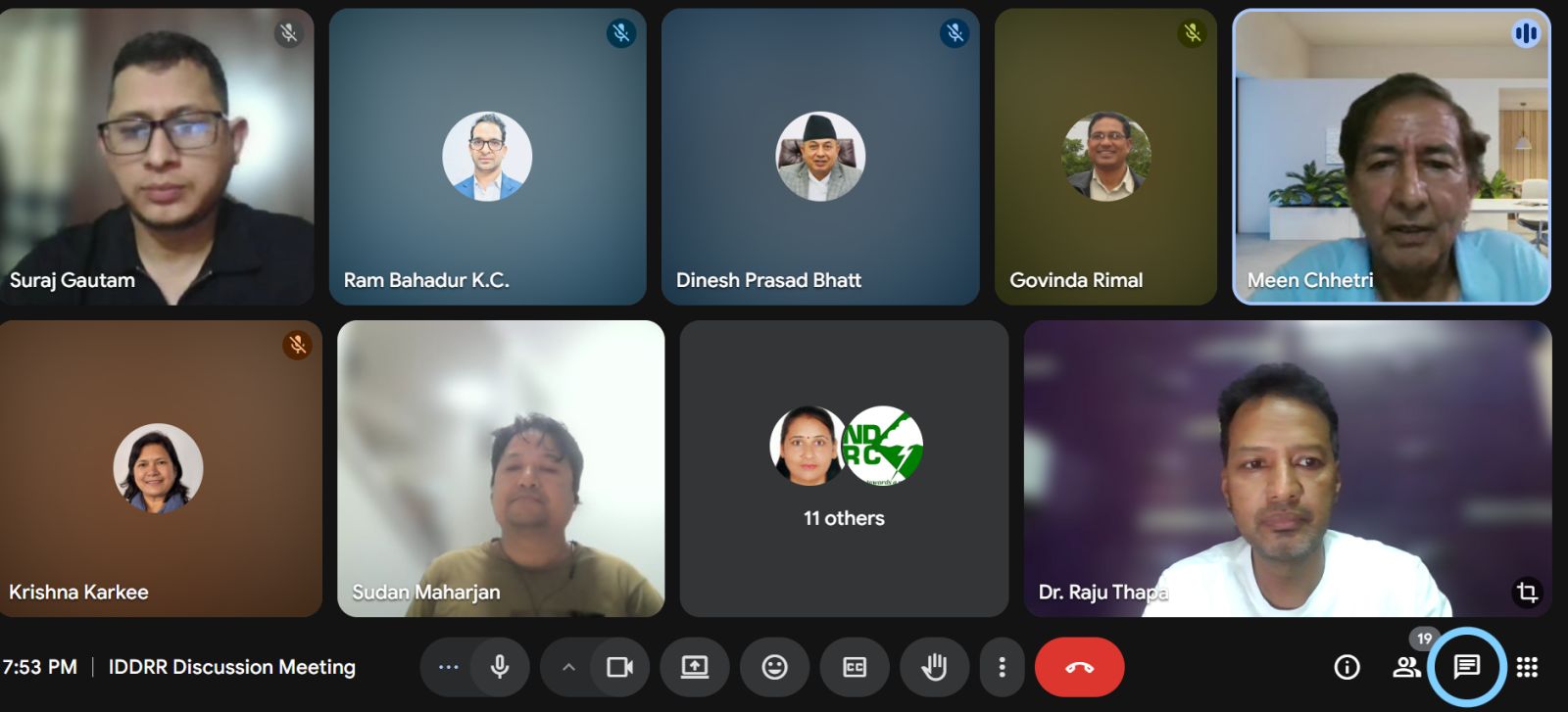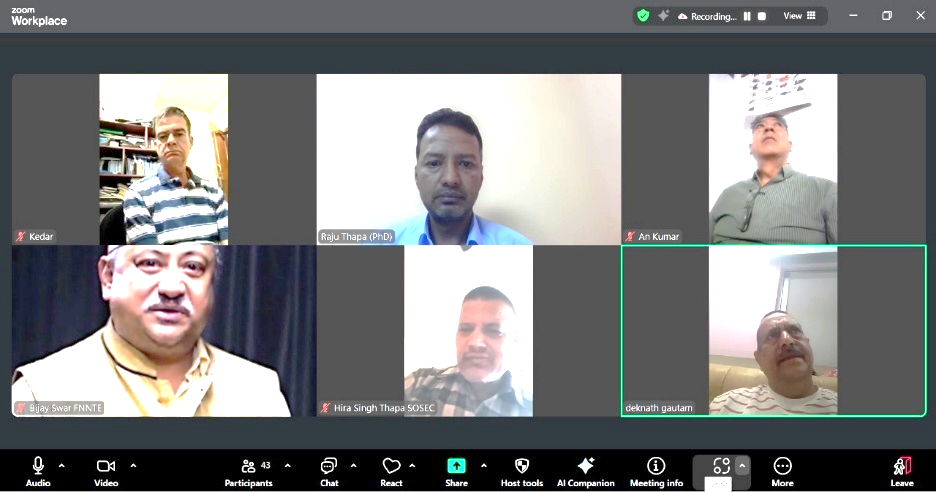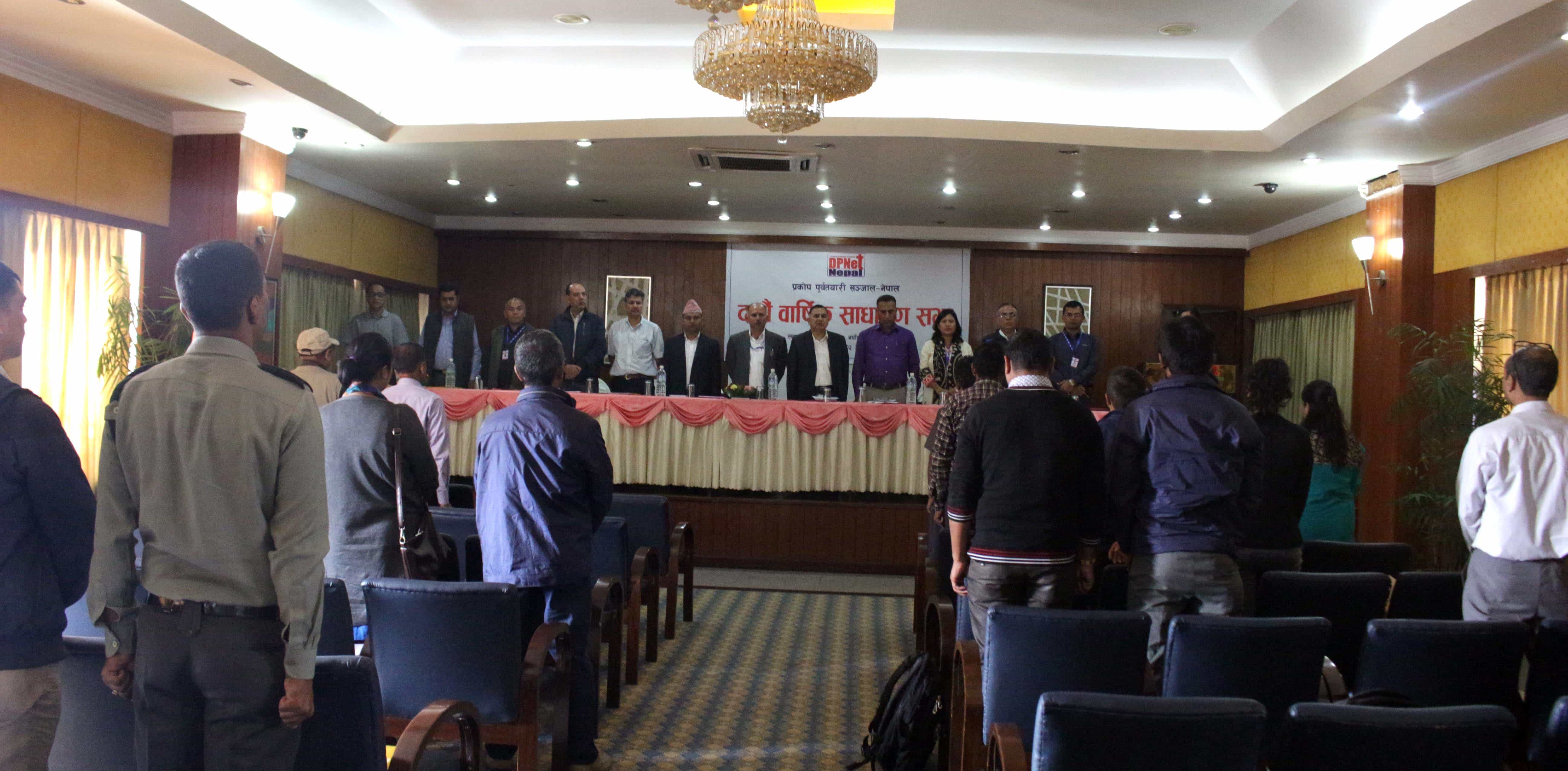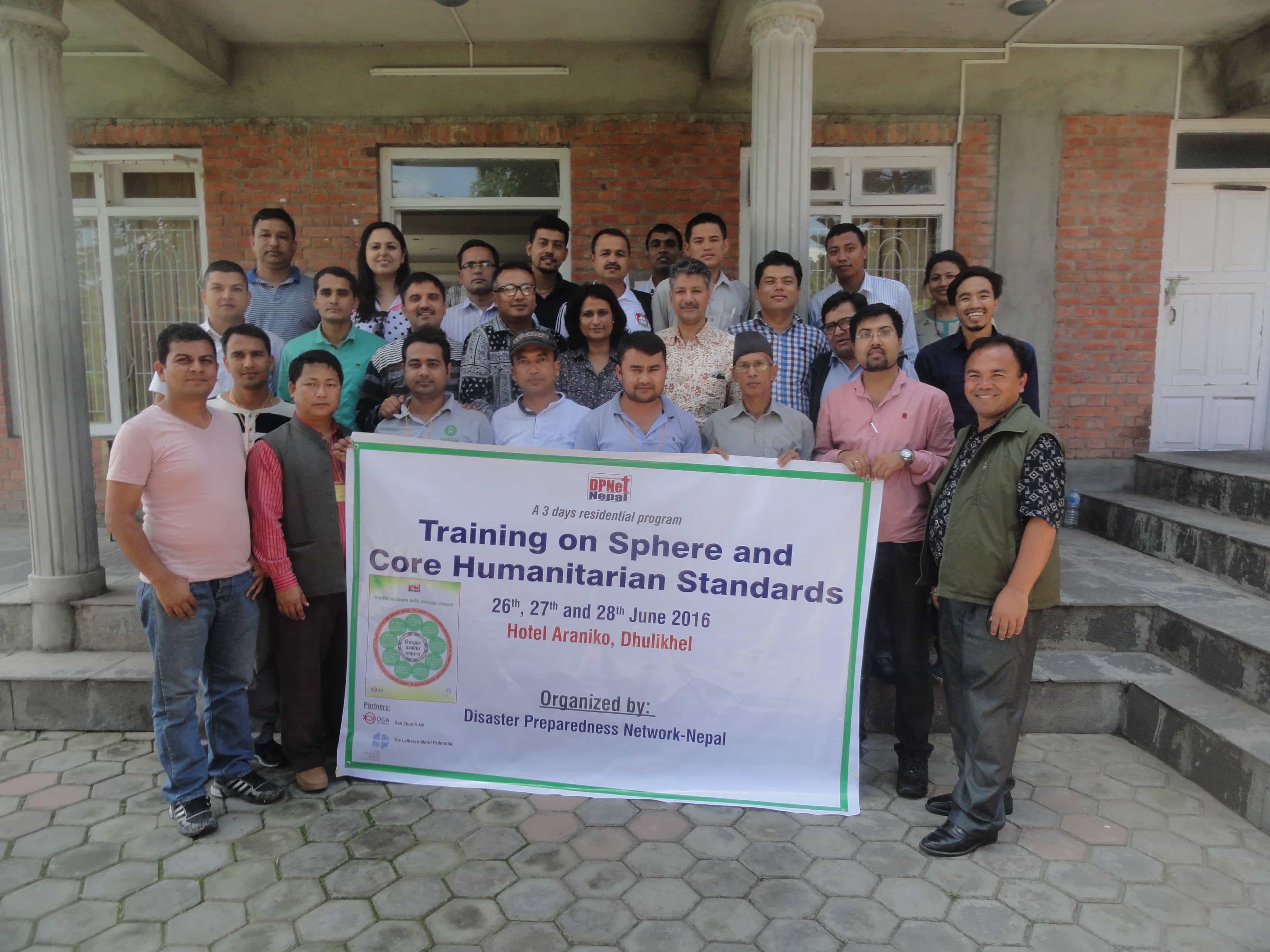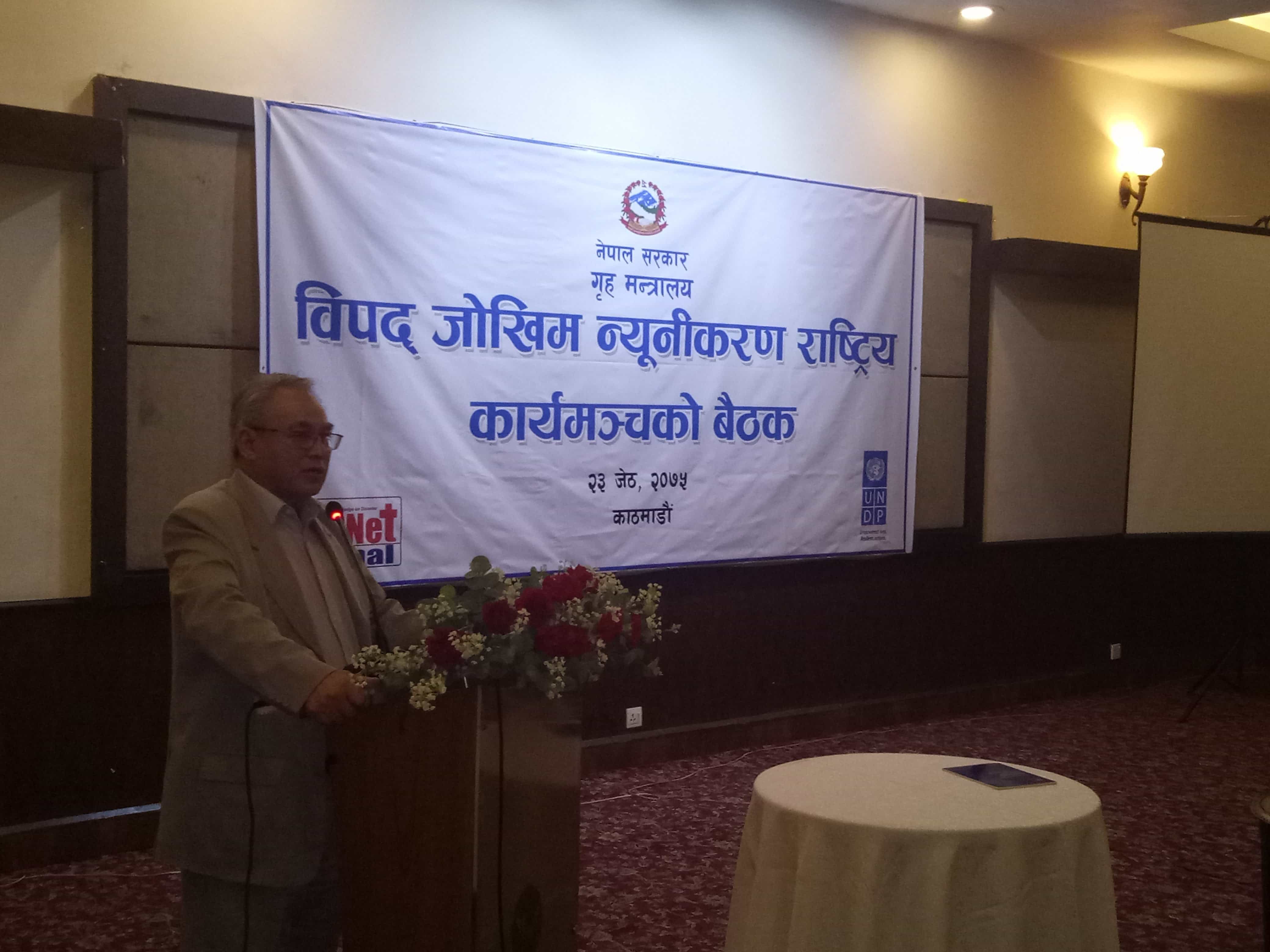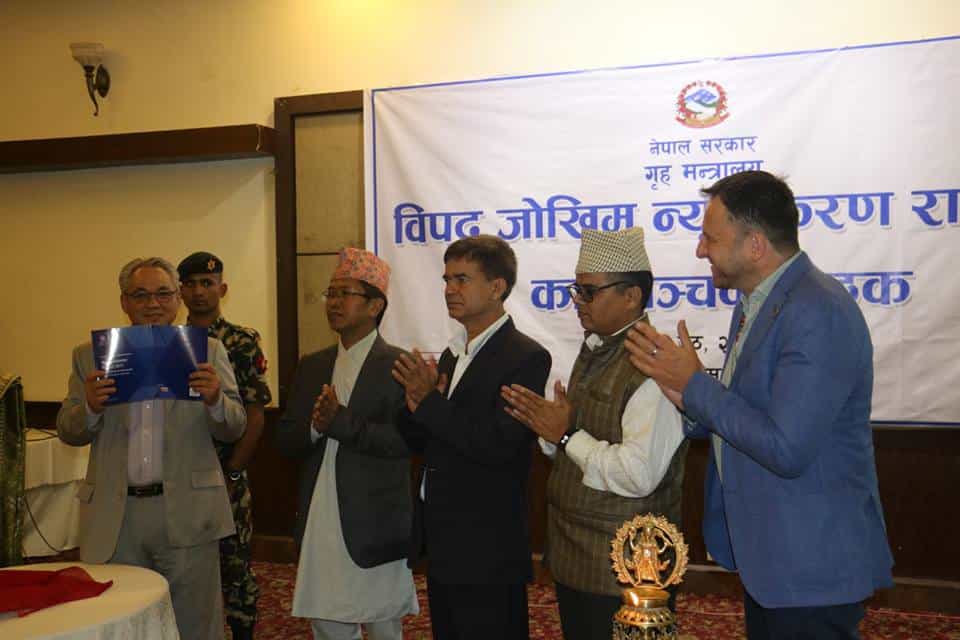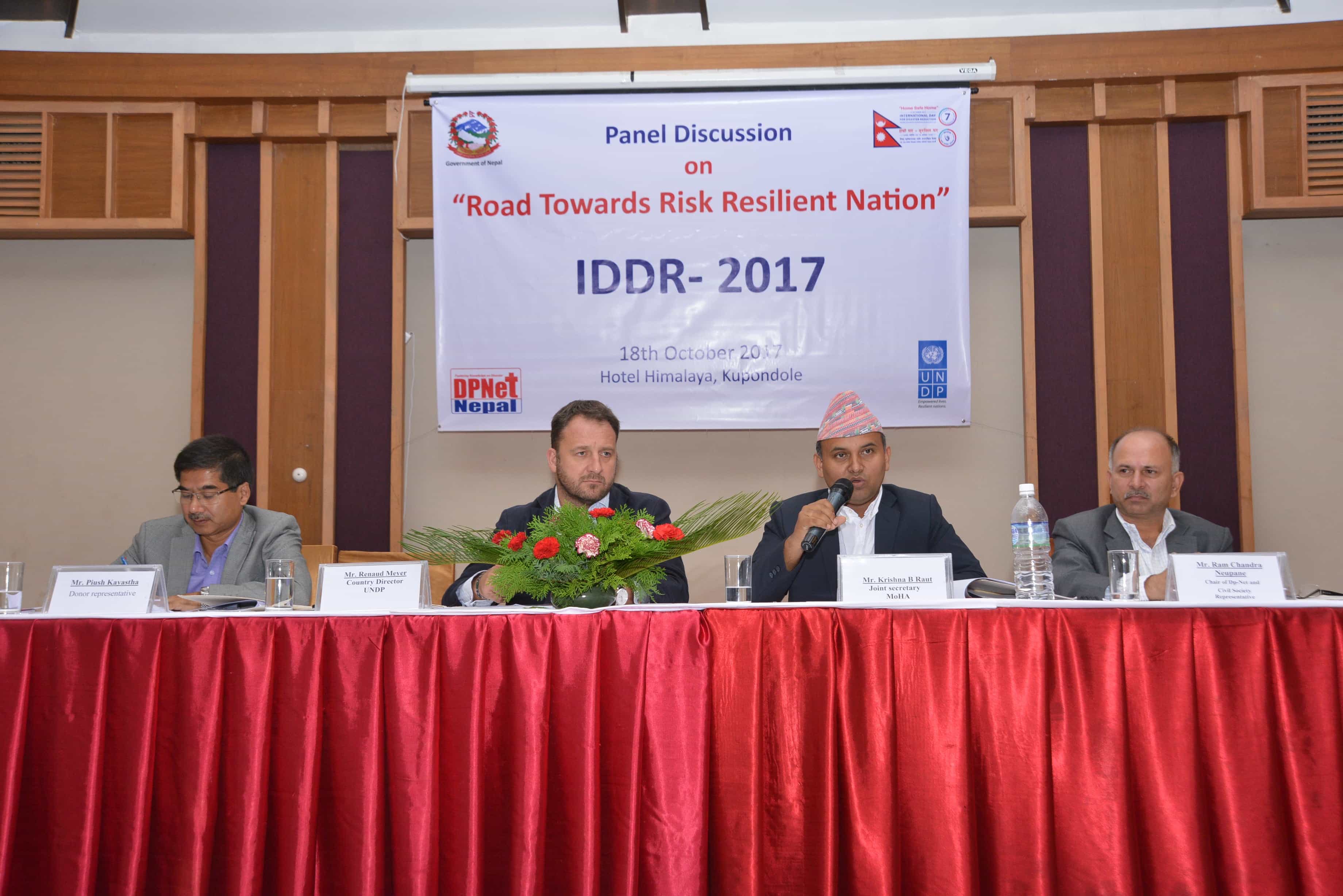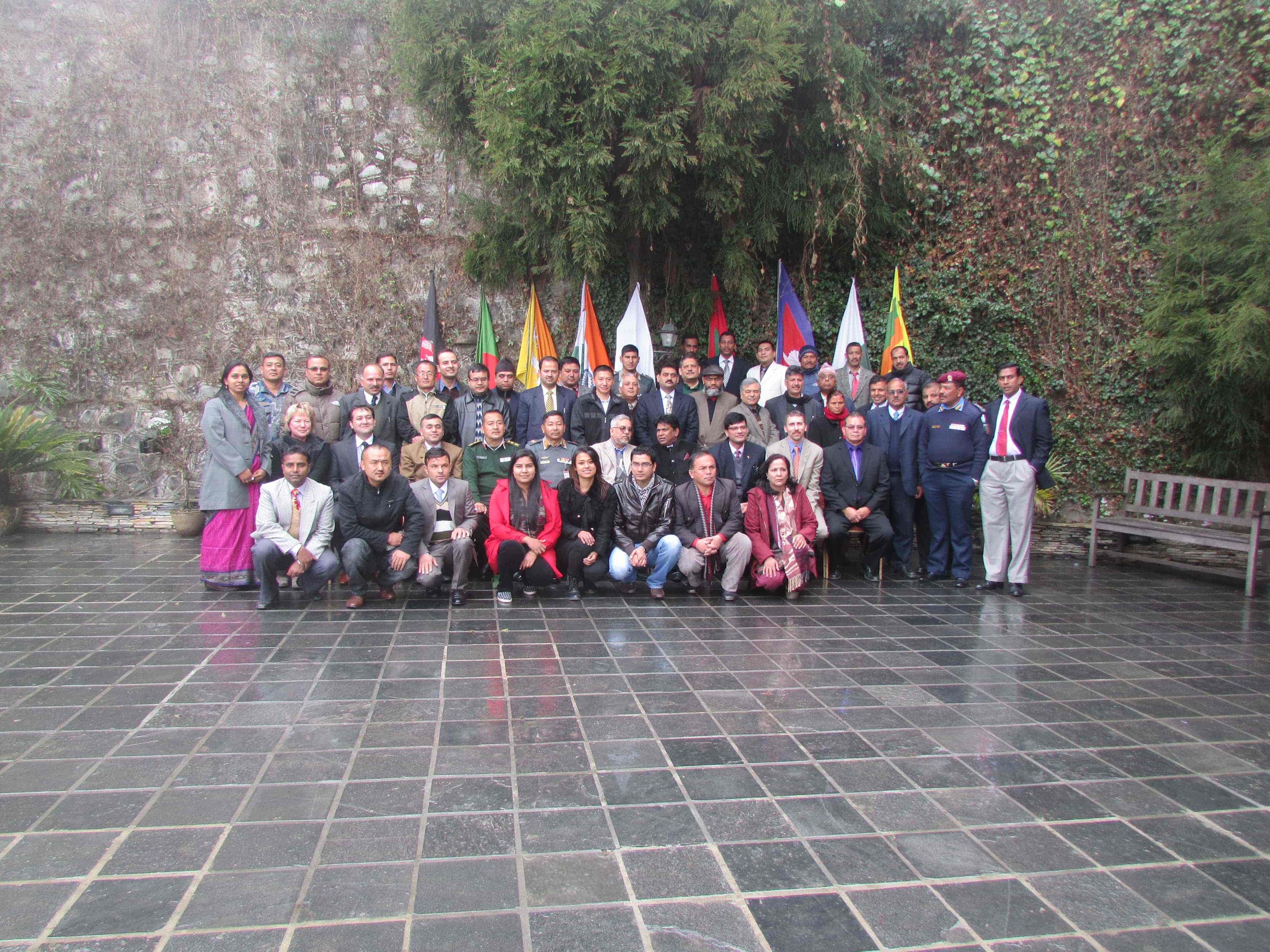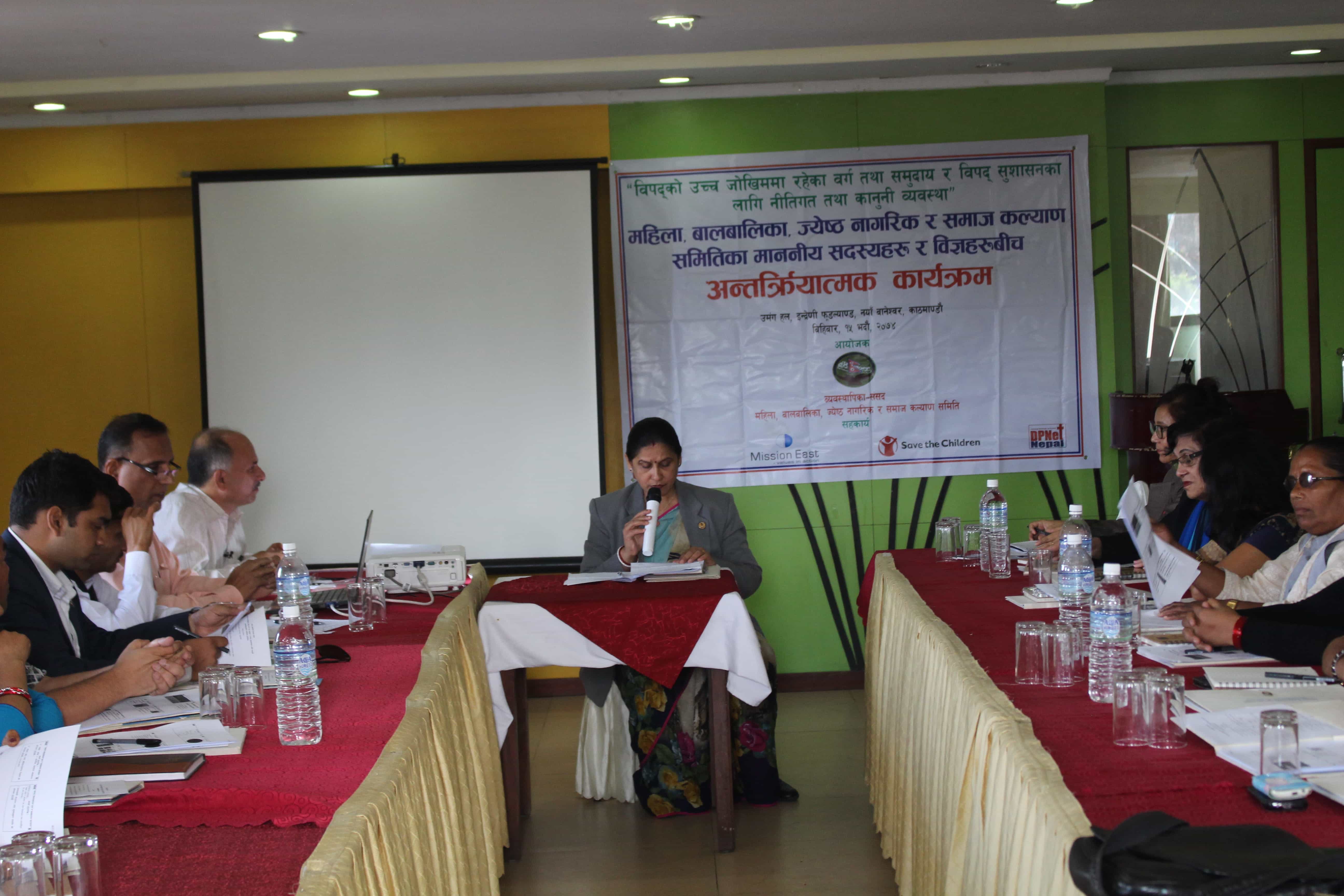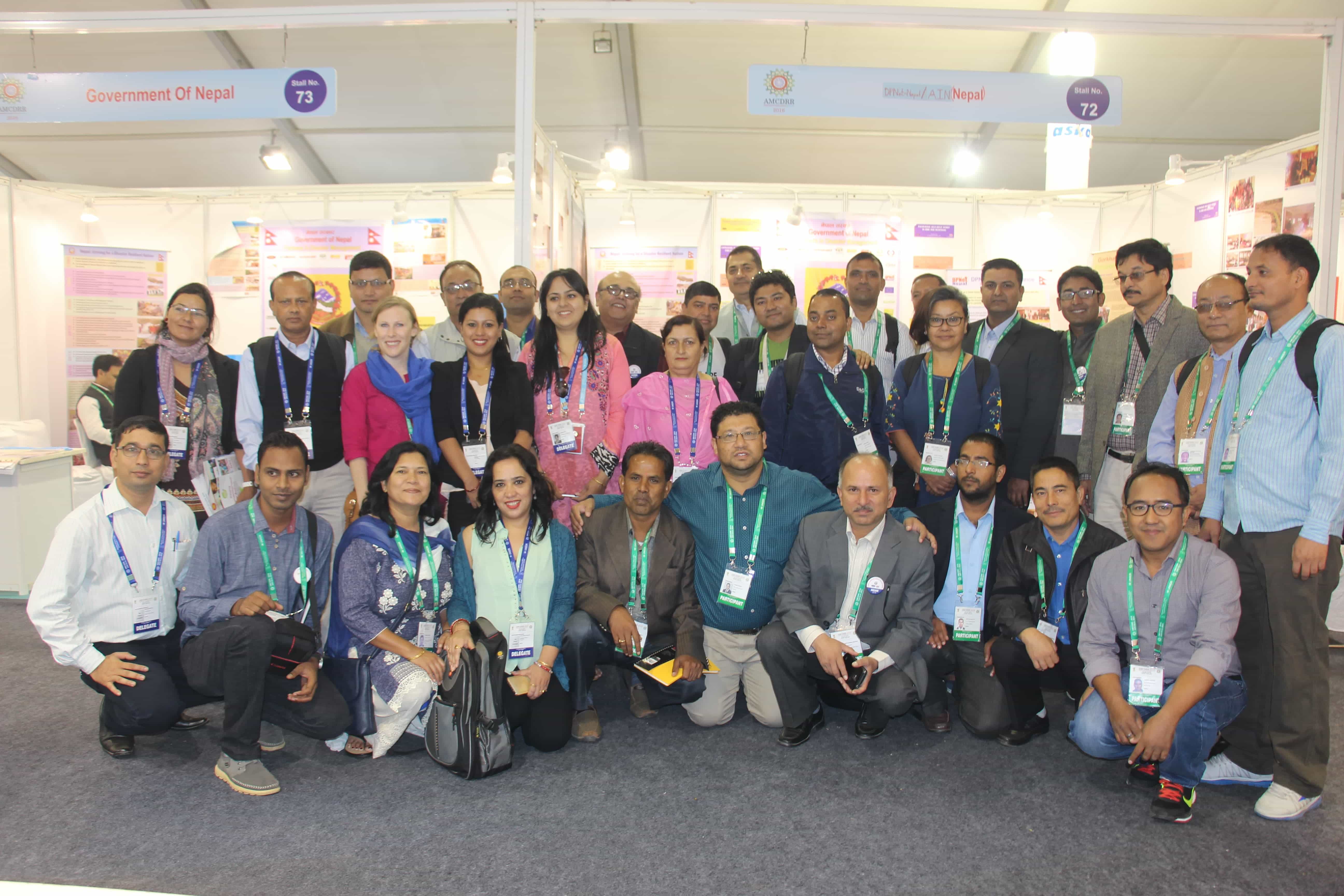Nepal Delegation Reviews APMCDRR 2024 Outcomes and Key Takeaways
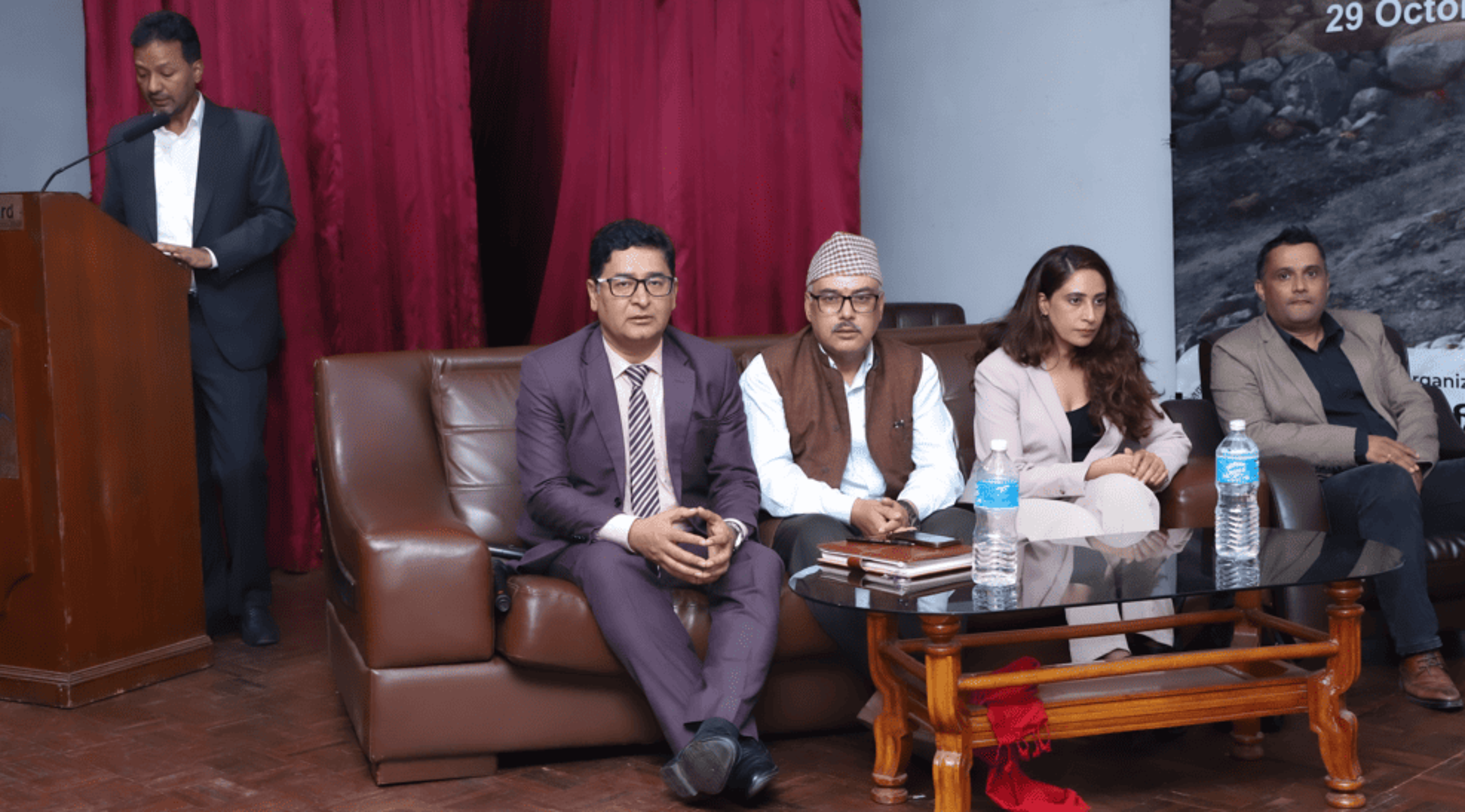
On October 29, 2024, post-conference review session following the Asia-Pacific Ministerial Conference on Disaster Risk Reduction (APMCDRR) organized. The program was led by NDRRMA Executive Chief Anil Pokhrel and featured a detailed presentation by Dr. Raju Thapa, who also coordinated Nepal Team Delegation for APMCDRR 2024. Representing Nepal’s delegation at APMCDRR, Dr. Thapa shared key insights, observations, and takeaways collected from the Nepali delegation members, emphasizing the importance of disaster resilience as the region prepares for 2030 in line with the Sendai Framework for Disaster Risk Reduction.
The APMCDRR 2024 conference in Manila was the first of its kind to be held following the Midterm Review of the Sendai Framework. With the theme "Eyes on 2030: Enhancing Ambition in Asia-Pacific," the conference aimed to strengthen the region’s disaster risk reduction efforts through a focused and action-oriented agenda. This year’s theme highlighted the urgency of accelerating DRR initiatives across Asia-Pacific to address the pressing climate and disaster risks confronting the region. The thematic pillars included practical solutions to enhance disaster risk financing, gender-responsive and inclusive disaster risk governance, and localization for resilience across both urban and rural communities. Alongside these pillars, the conference also emphasized critical focus areas such as the need for sustainable and predictable investments in disaster risk reduction, leveraging technology and knowledge-sharing, and fostering collaboration across multiple stakeholders and governance levels.
The APMCDRR conference recognized several cross-cutting themes, including the importance of convergence between disaster risk reduction, climate change, and broader development efforts, as well as the essential role of the private sector in disaster risk management. The discussions revolved around current challenges and potential opportunities for enhancing resilience in Asia-Pacific, such as the need for coherent and coordinated DRR approaches that engage both public and private sectors. The sessions highlighted that one of the primary challenges is the integration of DRR measures into broader development initiatives to ensure that preparedness and resilience are addressed across various socio-economic and environmental spheres. Furthermore, the conference underscored the importance of community engagement and the need for inclusive governance to foster collective responsibility and accountability in building resilient communities.
Nepal’s delegation to APMCDRR was led by the Chairperson of National Platform for Disaster Risk Reduction (NPDRR) and Executive Chief of NDRRMA and it was coordinated under the banner of NPDRR. The Nepali team entered the conference well-prepared, having developed a common position paper and official statement through a consensus-driven process involving multiple stakeholders, coordinated by DPNet. This collaborative approach ensured that the delegation’s presence was unified and strategically focused, presenting Nepal as a committed and cohesive participant across various sessions. Throughout the conference, Nepal’s representatives actively participated in main sessions, parallel sessions, sideline events, and the ignite stage, showcasing Nepal’s progress and commitment to disaster risk management. A dedicated marketplace was also managed by the delegation to highlight Nepal’s ongoing initiatives and DRR efforts. Additionally, the delegation held daily review and reflection meetings, allowing members to discuss the evolving discourse, refine their positions, and adapt to the dynamic environment of the conference.
In his presentation, Dr. Thapa shared a series of insights gathered from the APMCDRR, highlighting the Nepali delegation’s reflections on current disaster resilience strategies and future focus areas. One of the primary takeaways was the necessity for inclusive governance frameworks in DRR, stressing the importance of prioritizing marginalized communities to build equitable and resilient disaster management systems. The delegation highlighted that involving vulnerable groups including women, children, the elderly, and people with disabilities ensures that DRR efforts are comprehensive and address the unique needs of different segments of society. Another significant insight was the importance of integrating DRR measures into development plans and finance mechanisms, known as disaster risk financing (DRF). This approach secures sustained preparedness by ensuring that DRR is embedded within broader socio-economic frameworks, thus maintaining resilience at all governance levels.
Strong collaboration across sectors was highlighted as a key component of effective disaster risk management, with the conference emphasizing that successful DRR relies on partnerships among government agencies, the private sector, and civil society. Such collaboration maximizes the use of resources and enables the exchange of knowledge, enhancing the collective response to disaster risks. The Nepali delegation also emphasized the value of community engagement, noting that resilience efforts are strengthened when communities are engaged in DRR processes and share responsibility for their own preparedness and safety.
Additionally, the integration of indigenous knowledge with digital tools for early warning systems emerged as a key area of focus. The conference participants noted that combining traditional knowledge with modern technology enhances the relevance and effectiveness of early warning systems, particularly for remote and vulnerable communities. Another crucial insight was the role of trusted media partnerships in combating misinformation and strengthening risk communication. Ensuring that reliable information reaches communities is essential for effective disaster response, and media plays a vital role in delivering accurate and timely guidance to the public during emergencies. The conference also highlighted the transformative potential of artificial intelligence and robust data systems, particularly disaggregated data, in disaster management. Disaggregated data enables more precise risk assessment and tailored response strategies, making it a valuable asset across all phases of disaster management. The use of AI, alongside advanced data systems, allows for more dynamic and responsive disaster preparedness and mitigation. The conference highlighted the role of public-private partnerships in fostering innovation within DRR. Engaging small- and medium-sized enterprises (SMEs) and startups in disaster risk management drives technological innovation and expands funding options for DRR initiatives. The private sector, particularly SMEs and startups, was recognized as an essential partner in advancing disaster resilience through investment and the development of new technologies. The conference also focused on youth education in DRR, noting that fostering a culture of resilience from a young age prepares future leaders to address evolving disaster challenges. Finally, the principle of “building back better” emerged as a foundational approach to post-disaster recovery. By focusing on resilience and preparedness in reconstruction efforts, communities can be made stronger and better-equipped for future hazards, ensuring that each recovery effort leads to enhanced community resilience.
Following Dr. Thapa’s presentation, Executive Chief Anil Pokhrel acknowledged the major achievements of Nepal’s delegation at APMCDRR 2024. Mr. Pokhrel praised the delegation for aligning approach with the DRRM Act to lead the delegation by NDRRMA this year and for presenting a strong Nepali presence across all conference segments, including main sessions, side events, parallel sessions, ignite stage presentations, and the marketplace. The active engagement of Nepali representatives was widely recognized and appreciated by international stakeholders, further establishing Nepal’s leadership and commitment to disaster risk management. Mr. Pokhrel also highlighted the importance of Nepal’s DRR GEDSI (Gender Equality, Disability, and Social Inclusion) Strategic Action Plan, which was showcased as a model for other countries in promoting inclusive disaster management practices. The collaborative efforts of the delegation, along with DPNet’s effective coordination among DRR stakeholders in Nepal, received commendation for exemplifying cohesive disaster response planning and execution. A notable component of Nepal’s participation was its advocacy for climate justice. Nepal’s delegation highlighted the country’s vulnerability to climate-induced disasters, emphasizing the need for compensation and support to address the losses and damages caused by climate change. As a nation with minimal contributions to global emissions, Nepal remains disproportionately affected by the impacts of climate change, and its call for compensation underscored the importance of international support for climate-vulnerable countries.
Executive Chief Pokhrel concluded the session by thanking all participants for their dedication to advancing disaster resilience and for their active contributions to the discussions at APMCDRR 2024. He expressed confidence that the knowledge and experiences gained at the conference would strengthen Nepal’s disaster risk reduction framework, guiding the country toward a safer and more resilient future. The Kathmandu session closed with a renewed commitment to implementing the Sendai Framework’s goals, fostering inclusive and collaborative DRR practices, and enhancing Nepal’s resilience to future disaster risks.
The report on the Nepal Delegation's participation in APMCDRR is available at:
